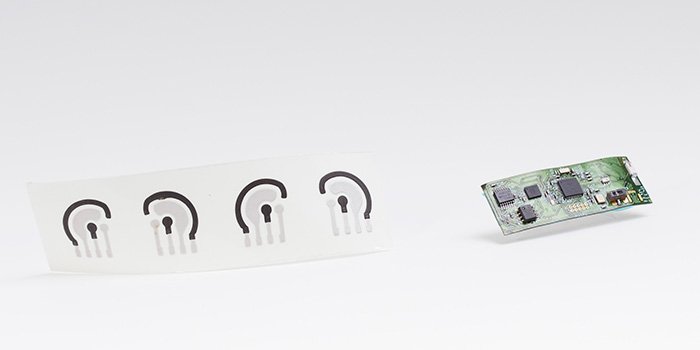The device can be worn on the skin and could be used by doctors and police officers for continuous,
The device consists of a temporary
«Lots of accidents on the road are caused by drunk driving. This technology provides an accurate, convenient and quick way to monitor alcohol consumption to help prevent people from driving while intoxicated," Wang said. The device could be integrated with a car’s alcohol ignition interlocks, or friends could use it to check up on each other before handing over the car keys, he added.
«When you’re out at a party or at a bar, this sensor could send alerts to your phone to let you know how much you’ve been drinking," said Jayoung Kim, a materials science and engineering PhD student in Wang’s group and one of the paper’s
Blood alcohol concentration is the most accurate indicator of a person’s alcohol level, but measuring it requires pricking a finger. Breathalyzers, which are the most commonly used devices to indirectly estimate blood alcohol concentration, are
Recent research has shown that blood alcohol concentration can also be estimated by measuring alcohol levels in what’s called insensible
Now, UC San Diego researchers have developed an alcohol sensor that’s wearable, portable and could accurately monitor alcohol level in sweat within 15 minutes.
«What’s also innovative about this technology is that the wearer doesn’t need to be exercising or sweating already. The user can put on the patch and within a few minutes get a reading that’s well correlated to his or her blood alcohol concentration. Such a device hasn’t been available until now," Mercier said.
How it works

The alcohol sensor consists of a temporary tattoo (left) developed by the Wang lab and a flexible printed electronic circuit board (right) developed by the Mercier lab.
Wang and Mercier, the director and
Mercier’s group developed the printed flexible electronic circuit board that powers the tattoo and can communicate wirelessly with a mobile device. His team also developed the magnetic connector that attaches the electronic circuit board to the tattoo, as well as the device’s phone app.
«This device can use a Bluetooth connection, which is something a breathalyzer can’t do. We’ve found a way to make the electronics portable and wireless, which are important for practical,
The tattoo works first by releasing pilocarpine to induce sweat. Then, the sweat comes into contact with an electrode coated with alcohol oxidase, an enzyme that selectively reacts with alcohol to generate hydrogen peroxide, which is electrochemically detected. That information is sent to the electronic circuit board as electrical signals. The data are communicated wirelessly to a mobile device.
Putting the tattoo to the test
Researchers tested the alcohol sensor on 9 healthy volunteers who wore the tattoo on their arms before and after consuming an alcoholic beverage (either a bottle of beer or glass of red wine). The readouts accurately reflected the wearers’ blood alcohol concentrations.
The device also gave accurate readouts even after repeated bending and shaking. This shows that the sensor won’t be affected by the wearer’s movements, researchers said.
As a next step, the team is developing a device that could continuously monitor alcohol levels for 24 hours.


